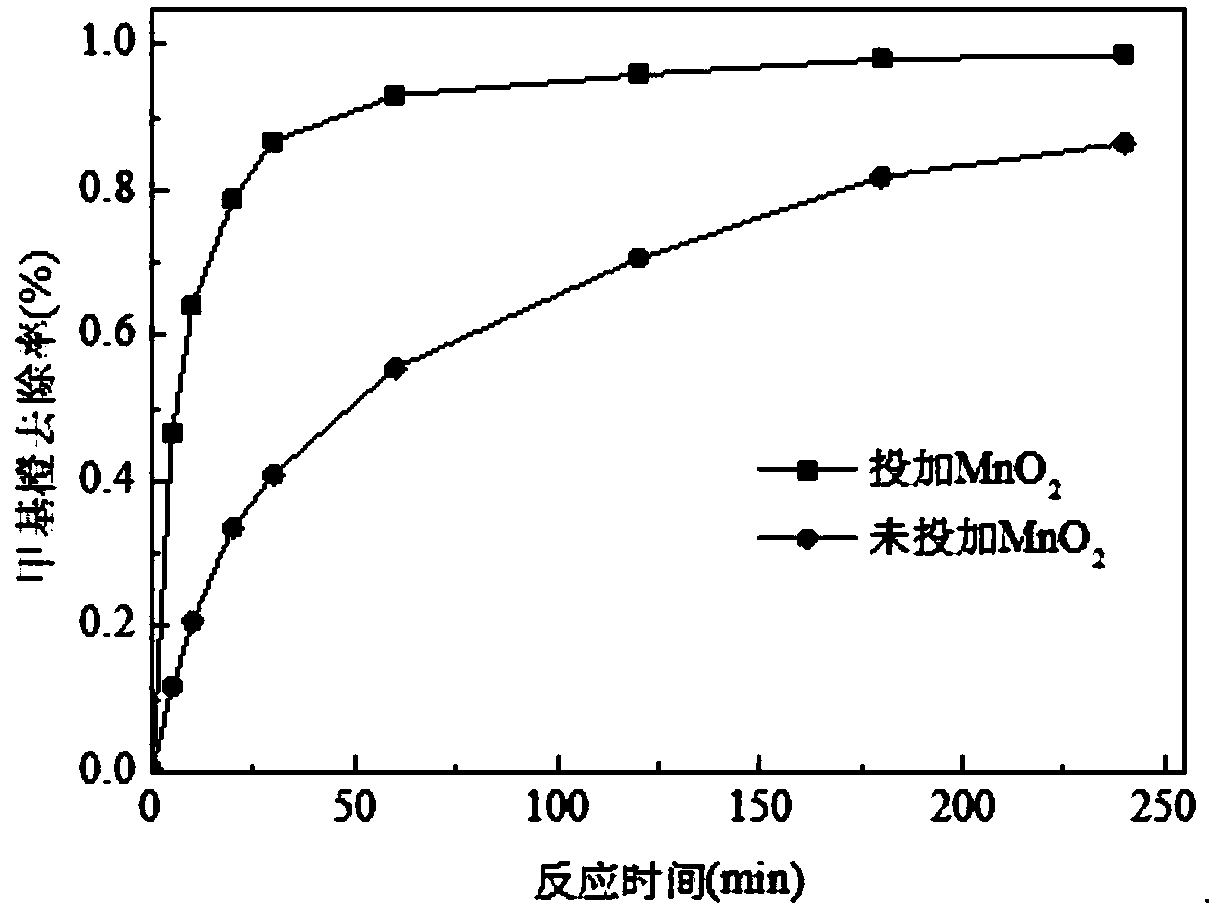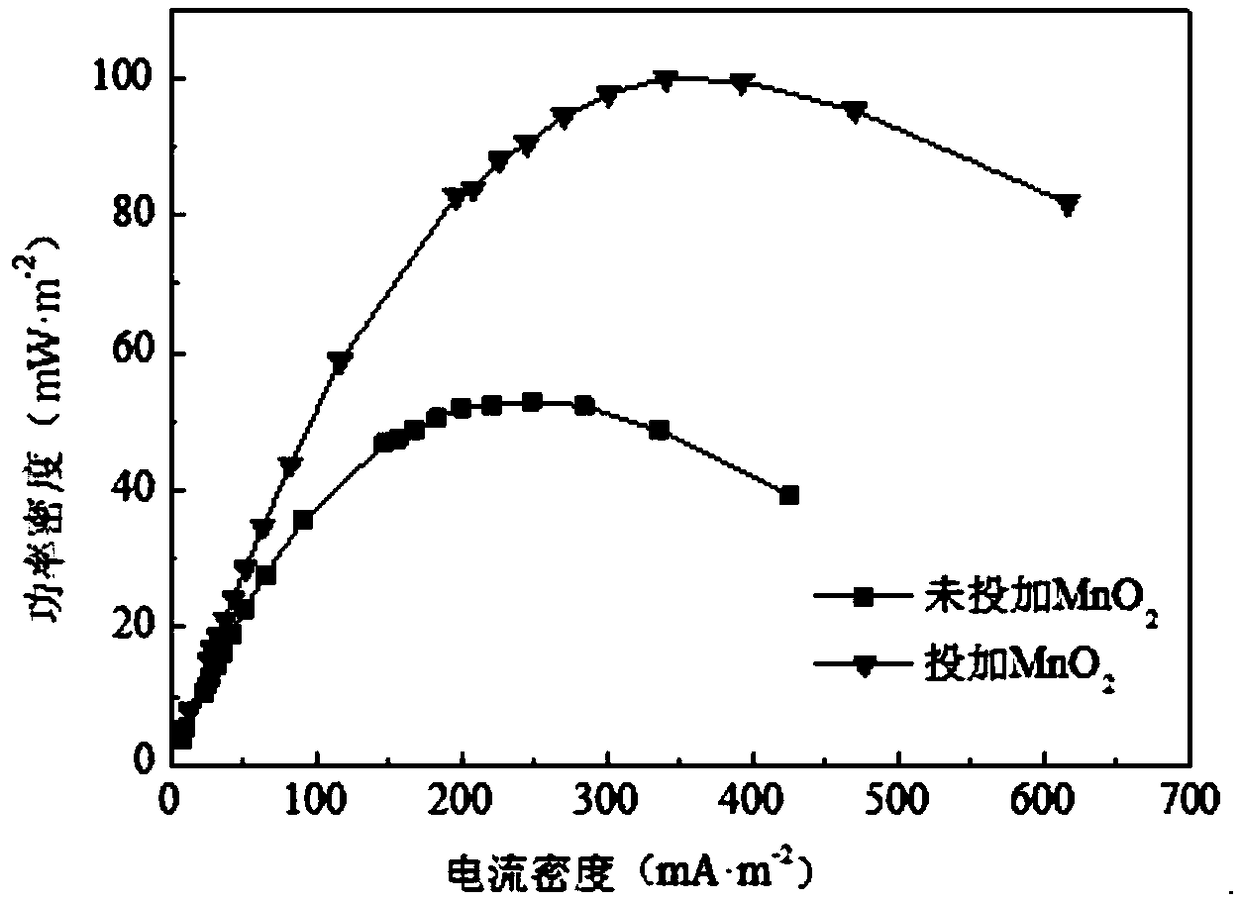Method for degrading dyestuff wastewater and synchronously generating power by improving capacity of activating PDS by MFC
A dye wastewater and electronic technology, applied in biochemical fuel cells, chemical instruments and methods, water pollutants, etc., can solve the problem of low power generation performance of MFC, low number of sulfate radicals, and inability to achieve high-efficiency degradation of organic pollutants, etc. problem, to achieve the effect of low long-term operation cost, improved synchronous power generation performance, and improved processing effect
- Summary
- Abstract
- Description
- Claims
- Application Information
AI Technical Summary
Problems solved by technology
Method used
Image
Examples
Embodiment 1
[0018] To clarify MnO 2 To improve the effect of MFC activating PDS to degrade dye wastewater and synchronously generate electricity, the methyl orange solution was used as a simulated pollutant to measure the effect of adding MnO 2 and without adding MnO 2 The removal rate of methyl orange in the system and the synchronous power density curve of MFC.
[0019] The catholyte of MFC was replaced with 0.1mmol / L methyl orange solution, and 2mmol / L potassium persulfate was added. Take 1mL of water samples at 5, 10, 20, 30, 60, 120, 180, and 240 minutes respectively, dilute 3 times with lye, and then filter through a 0.45 μm filter membrane, and use a UV-visible spectrophotometer at a maximum absorption wavelength of 468nm Measure the absorbance of the solution, calculate the dye concentration and the corresponding removal rate, and record the synchronous electricity generation of MFC through the data collector.
[0020] Based on the obtained data, plotting as figure 1 as shown ...
PUM
 Login to View More
Login to View More Abstract
Description
Claims
Application Information
 Login to View More
Login to View More - Generate Ideas
- Intellectual Property
- Life Sciences
- Materials
- Tech Scout
- Unparalleled Data Quality
- Higher Quality Content
- 60% Fewer Hallucinations
Browse by: Latest US Patents, China's latest patents, Technical Efficacy Thesaurus, Application Domain, Technology Topic, Popular Technical Reports.
© 2025 PatSnap. All rights reserved.Legal|Privacy policy|Modern Slavery Act Transparency Statement|Sitemap|About US| Contact US: help@patsnap.com


